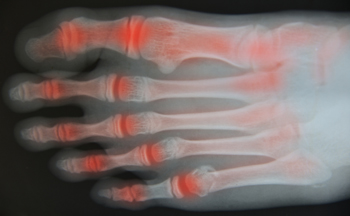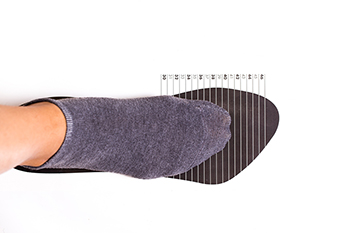
Heel pain can affect your daily activities and overall well-being. If you are constantly dealing with heel discomfort, heel cups might be a solution. These small, supportive shoe inserts can work wonders when it comes to alleviating heel pain. Heel cups are designed to provide cushioning and support to the heels and are particularly beneficial for conditions like plantar fasciitis and Achilles tendonitis. They redistribute the pressure on your heels and reduce the strain on the affected areas. This, in turn, helps to decrease inflammation and discomfort. Additionally, heel cups help maintain proper foot alignment. By providing arch support, they can correct pronation problems, which are common causes of heel pain. The improved alignment helps prevent further stress on the heels and aids in the natural healing process. If you are experiencing heel discomfort, it is suggested that you make an appointment with a chiropodist who can help you find out if heel cups are the answer for you.
Heel pain is a common problem that can be caused by a variety of injuries, medical conditions, and other factors. If you suffer from heel pain, please consult with one of the specialists from Thornhill Foot Clinic. Our chiropodists can help you maintain the health of your lower limbs and your mobility.
When it comes to heel pain, the exact location and type of pain are important to note. Some of the conditions that may cause heel pain include:
Plantar fasciitis - An inflammation of the ligament that runs along the bottom of the foot; it causes a stabbing pain under the heel that is at its worst when taking your first few steps after a long rest and while standing on your tiptoes or climbing stairs
Achilles tendonitis - An inflammation of the tendon in the back of the calf; it causes pain in the back of the heel that is at its worst after resting, as well as ankle and calf stiffness, swelling, and tenderness
Bone spurs - Bony lumps on the back of the heel bones that cause sharp pain upon first standing up; the pain becomes dull and achy over time
Heel fractures - A break or crack in the heel bone that causes pain, swelling, and difficulty walking
Retrocalcaneal bursitis - Swelling of the small, fluid-filled sac at the back of the heel bone; it causes pain, swelling, redness, and warmth in the back of the heel
Tarsal tunnel syndrome - Compression of the posterior tibial nerve which causes a pins and needles sensation in the heel, foot, and calf
Your chiropodist will be able to diagnose the underlying cause of your pain and prescribe the right treatments for you. If you have any questions, please feel free to contact our office located in . We offer the newest diagnostic and treatment technologies for all your foot care needs.









